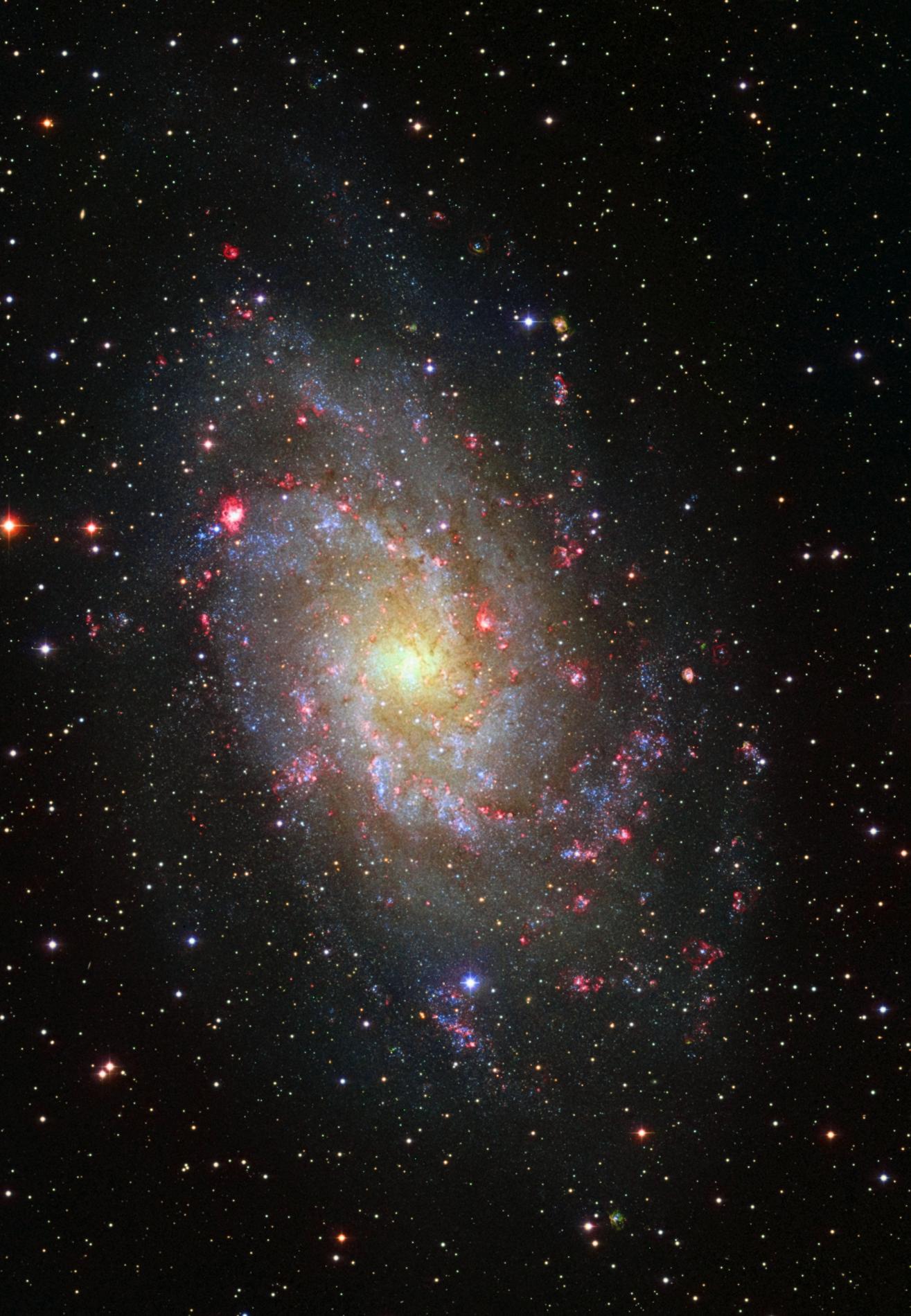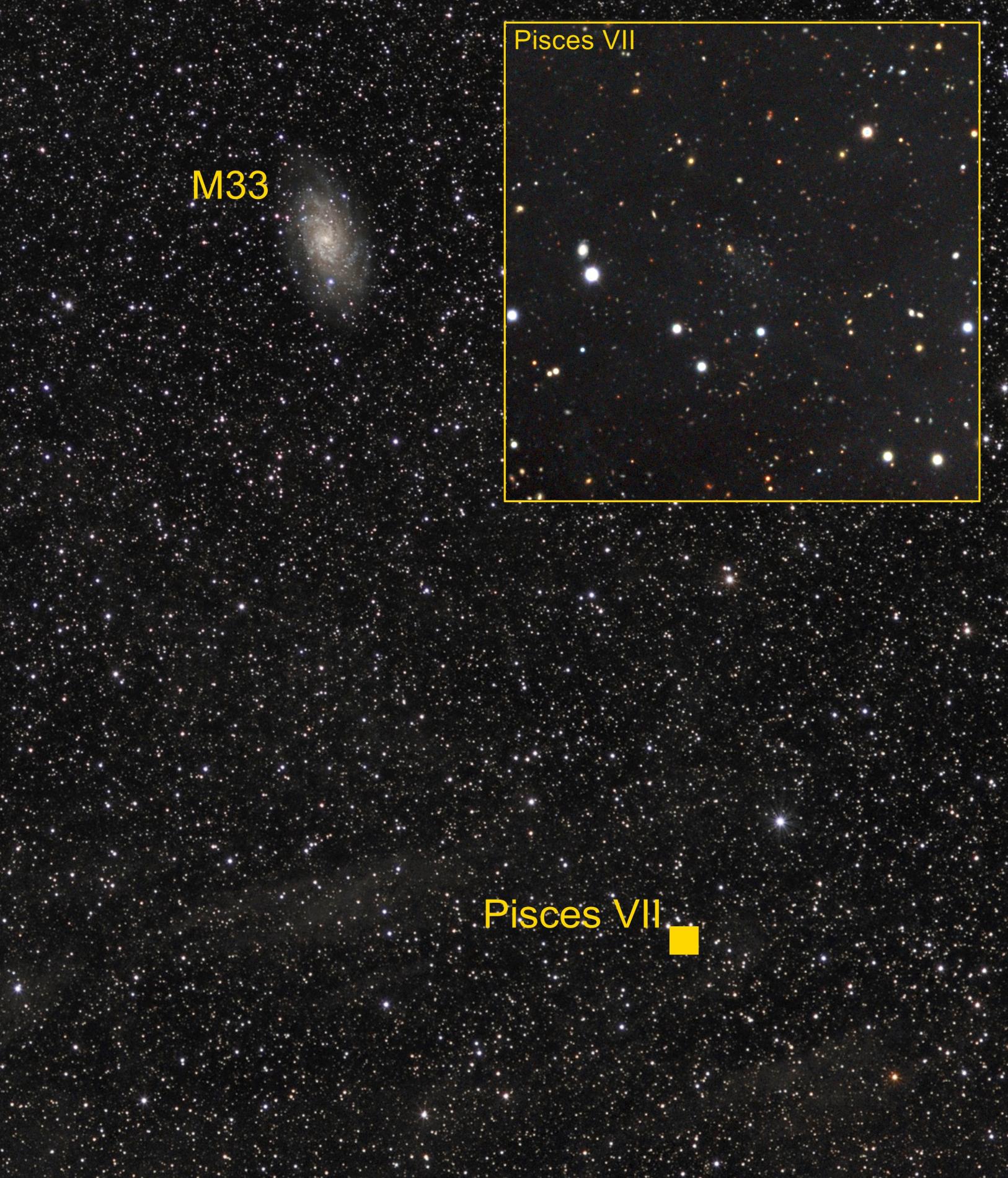Discovery of a possible satellite galaxy of M33, a neighbouring Local Group galaxy
M33, also known as the Triangle galaxy, is the third largest galaxy in the Local Group, after Andromeda and the Milky Way. The finding is part of the search for the "lost satellites", which tries to resolve the discrepancy between the galaxy formation models and the observations of the Local Group galaxies
The acronym Lambda-CDM (Lambda-Cold Dark Matter) refers to the cosmological model that best explains the origin and evolution of the universe. Indeed, starting from the initial composition of the cosmos (mostly hydrogen and helium), simulations using this model form stars, galaxies, clusters and superclusters of galaxies very similar to the ones we observe. However, these simulations suggest that observations of some Local Group galaxies, such as the neighboring galaxy M33, should show numerous satellites, and only one has been discovered around it. Now, research led by the Institute of Astrophysics of Andalusia (IAA-CSIC) has detected a candidate satellite of M33, which opens the door to new discoveries.
With between thirty and forty billion stars, the spiral galaxy M33 (or Triangulum galaxy) is the third largest galaxy in the Local Group, to which the Milky Way belongs. The data suggest that it is gravitationally bound to Andromeda, the largest of the group, and represents a clear example of what is known as the "missing satellites" problem: according to simulations it should have between nine and twenty-five satellite galaxies, but so far only one has been found.

This discrepancy, which does not occur for example in the Large Magellanic Cloud, a galaxy of the group of similar size with seven satellite galaxies, could be due to several reasons. Previous work has suggested that, since M33 is tied to Andromeda, a past interaction may have ejected most of its satellites. However, the orbital movements indicate that M33 is in the process of its first fall towards Andromeda, so that the problem could imply a still incomplete knowledge of the processes of galaxy formation or the low luminosity of its satellites, below the detection limits of the surveys.
"In this sense, the discovery of a new candidate for M33 satellite may change our understanding of the system and galaxy formation, and for this reason it is important to carry out a census of dwarf galaxies using the deepest possible data," says David. Martínez-Delgado, IAA-CSIC Talentia Senior researcher who heads the work.
The new galaxy, named Pisces VII, was detected by amateur astronomer Giuseppe Donatiello in public data from DESI Legacy surveys by visual inspection. To confirm it, the scientific team used deeper data obtained with the 3.5-meter TNG telescope, which made it possible to measure its distance and its absolute magnitude. Analysis suggests that it could be a satellite of M33, but the distance estimation is very complex and there would be another possibility: if it were further away, it would be the most isolated dwarf galaxy detected so far.
“Deep images obtained a few weeks ago by the Gemini North telescope will allow us to detect fainter stars in Pisces VII, which act as more robust distance estimators since they have a known standard brightness. We also plan to confirm whether the movement of this new galaxy is consistent with that of a dwarf galaxy in the Local Group, for which we need spectroscopic observations with an eight or ten-meter telescope, such as the Gran Telescopio Canarias or the Keck", says Michelle Collins, a researcher at the University of Surrey who is involved in the discovery.
This result suggests that there could be more undiscovered satellites. In fact, the science team has already observed new candidates with the eight-meter Gemini North telescope, and plans to measure their radial velocity to confirm their association with the Triangle galaxy.

D. Martínez-Delgado et al. "Pisces VII: Discovery of a possible satellite of Messier 33 in the DESI Legacy Imaging Surveys". Monthly Notices of the Astronomical Society, October 2021. https://doi.org/10.1093/mnras/stab2797
Instituto de Astrofísica de Andalucía (IAA-CSIC)
Unidad de Divulgación y Comunicación
Silbia López de Lacalle - sll[arroba]iaa.es - 958230676
https://www.iaa.csic.es
https://divulgacion.iaa.csic.es

